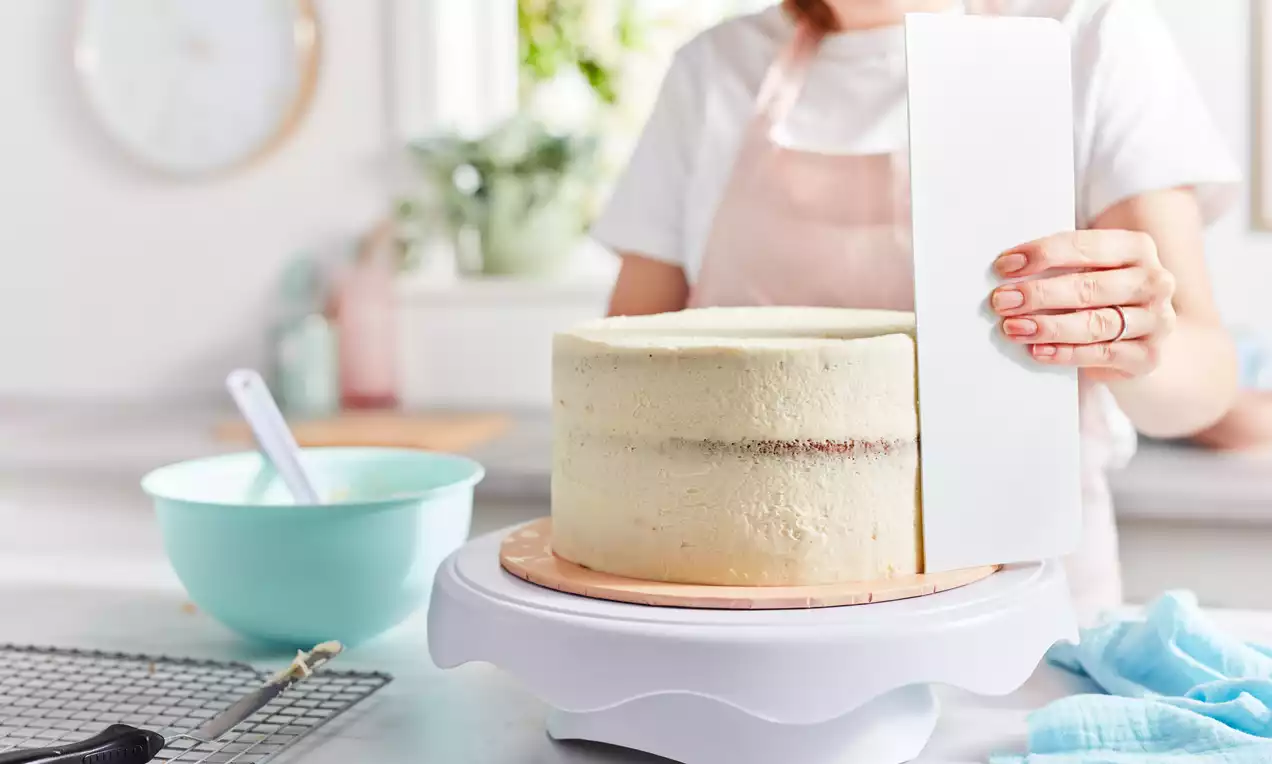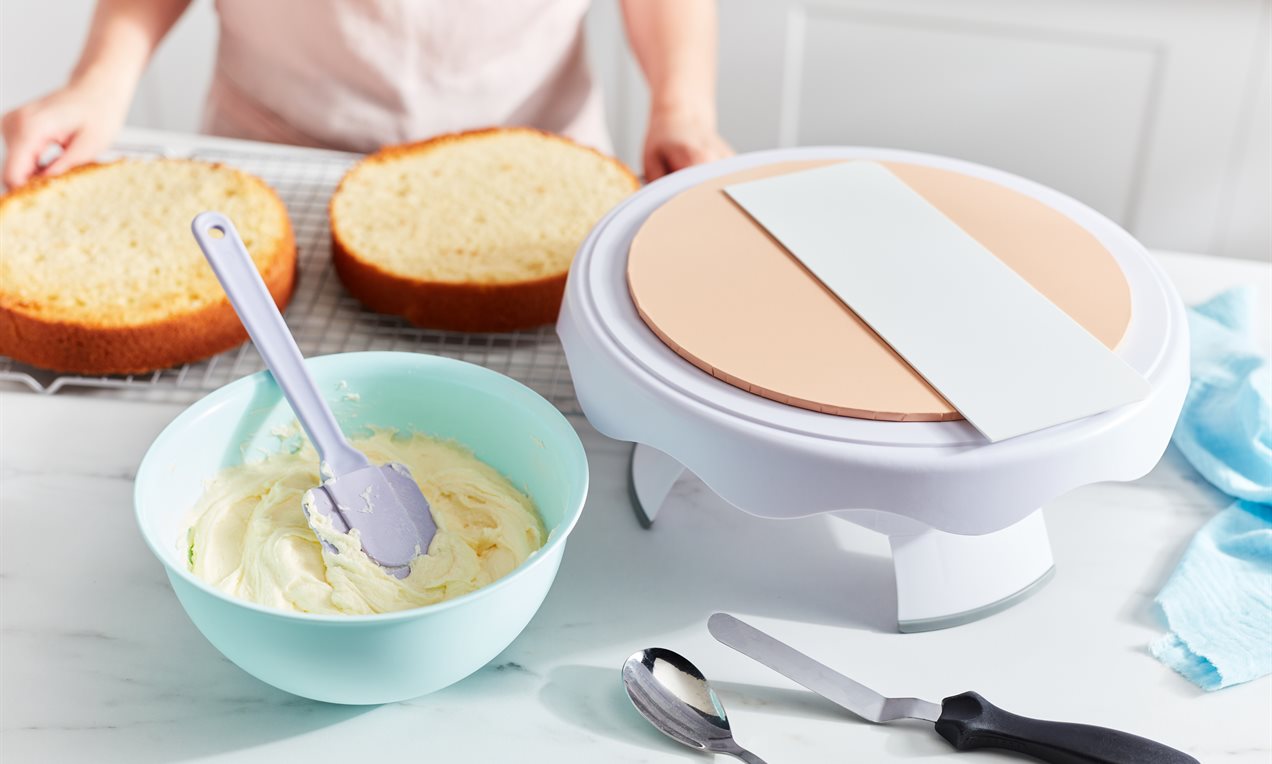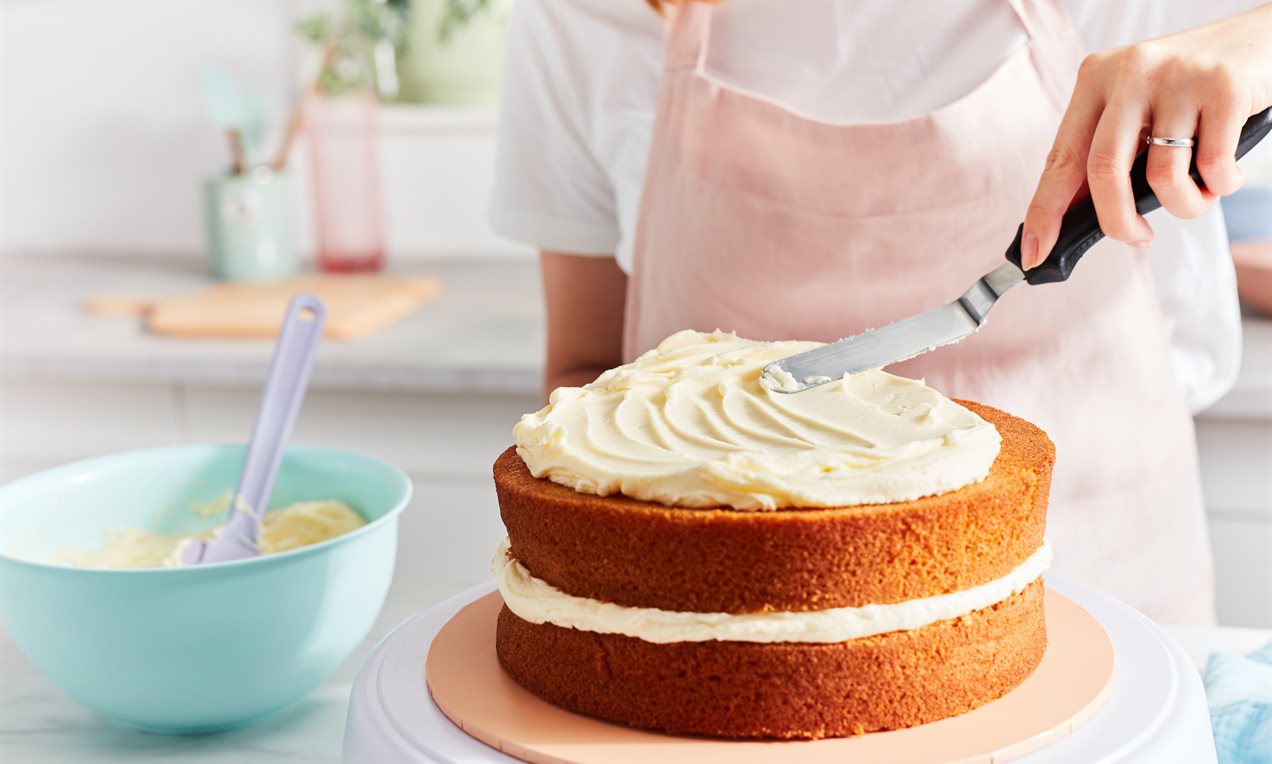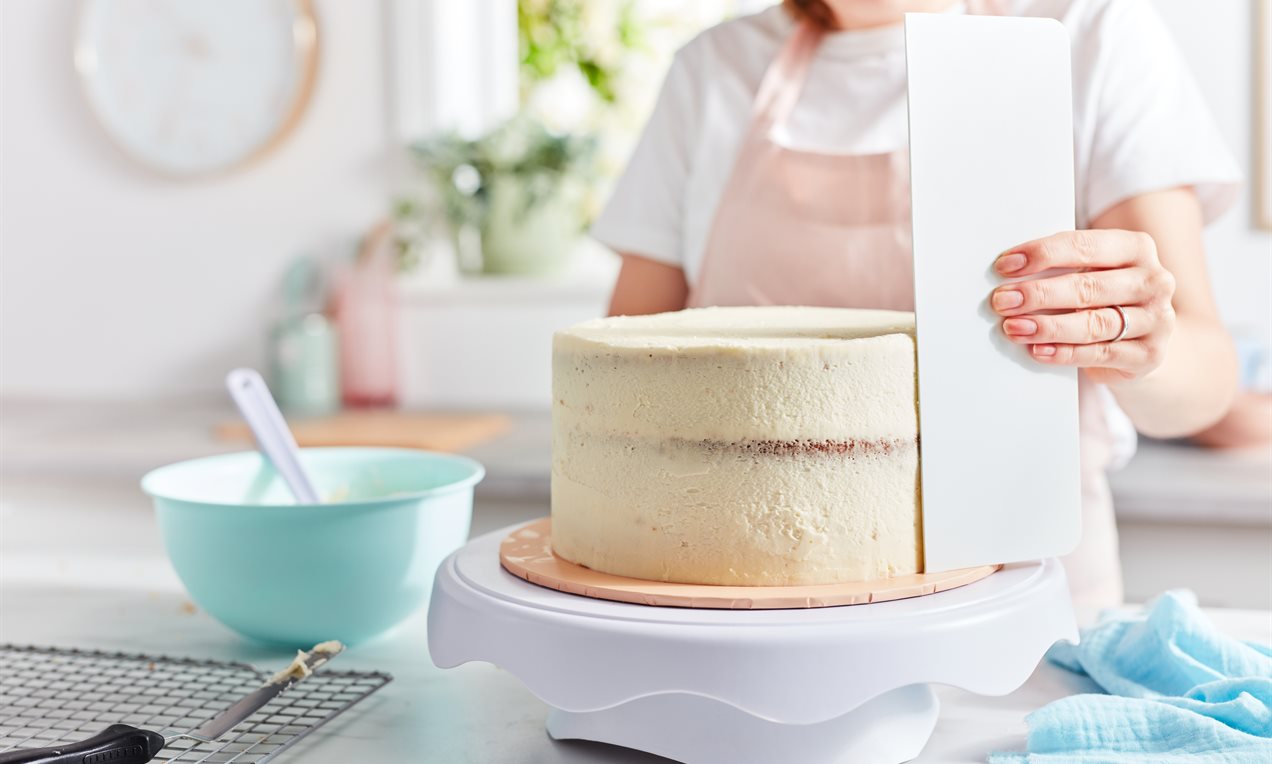
How to Crumb Coat a Cake
A crumb coat is a must-know skill for anyone looking to perfect their cake decorating. Whether you're a beginner or simply refreshing your skills, this step-by-step guide will walk you through the process and help you create stunning results every time.
A crumb coat is the first layer of buttercream applied to your cake. It serves two main purposes: first, it helps seal in moisture, keeping the cake from drying out, and second, it captures any loose crumbs, preventing them from lifting into the final layer of buttercream and ruining the smooth finish.
Once you’ve mastered the technique, you’ll be able to create beautifully iced cakes every time. Imagine the excitement when your little one successfully crumb coats their very first cake! Let’s walk through the simple steps to get you started on the path to perfecting this key cake-decorating skill.
Your go-to tools
• Cake board or card
• Palette knife
• Turn table
• Cake scraper
• Piping bag with the end cut
• Two to four layers of sponge cake
• Buttercream of your choice
• Optional fillings and decorations depending on personal preference

• Start by piping a small amount of buttercream onto your cake board, then place the first sponge layer on top. (This helps secure the cake and prevents it from shifting).
• Next, pipe a border of buttercream around the edge of the sponge. If you're using a filling, spread it evenly in the centre, ensuring it doesn’t rise above the buttercream border. (This will help prevent the filling from spilling when you add the second layer of cake. If you're not using a filling, just continue with the buttercream.)
• Place the next sponge layer on top and repeat the process. For a two-layer cake, skip the filling and continue with buttercream. For a three-layer cake, repeat the steps and add the top layer of sponge.
• Now, pipe buttercream around the entire cake and use a palette knife to spread it evenly, covering the entire cake.

• Smooth the buttercream with a cake scraper, working from the outside in to achieve a uniform finish.
• Remove any excess buttercream with your palette knife.
• Chill the cake in the fridge or freezer for 30 minutes to an hour, allowing the crumb coat to set and harden.

When crumb coating a cake, keep these tips in mind:
• Your crumb coat doesn’t need to be perfect, as it will be covered with another layer of buttercream later. However, the smoother you make it, the better your final cake will look.
• When scraping off any excess buttercream with your palette knife, always work from the outside in to maintain even edges.
• Avoid scraping excess buttercream into fresh buttercream, as this can affect the final finish. You can use the buttercream with crumbs during the crumb coat stage, but make sure not to use it for the final layer.
Can I Crumb Coat a Frozen Cake?
Yes, it is best to use your frozen cake when crumb coating, it prevents the crumbs from lifting. When cake layers are frozen, they are firm and not crumbly. This makes them easy to handle and a dream to add your crumb coat to.
Can I Crumb Coat the Night Before?
Yes, you can crumb coat the night before. You need to leave your crumb coated cake in the fridge or freezer long enough for it to harden. This can be between 30 and 60 minutes, but you can always do it the night before and leave it in the fridge.
How Long to Leave Crumb Coat in A Fridge?
You should leave your crumb coat to harden in the fridge for as long as it takes to set hard. This can be between 30 minutes to an hour, but it will depend on your crumb coat and your fridge. You can also leave it overnight. The firmer the better.
Can you Crumb Coat with Cream Cheese Frosting?
Yes, you can use cream cheese frosting instead of buttercream. Make sure you use cold, firm cream cheese to get a nice pipeable consistency that’s great for cakes.
Do I Need to Crumb Coat Before Fondant?
Yes, before you cover your cake with fondant, you need a crumb coat. This thin layer of frosting traps any cake crumbs and acts as an adhesive to stop your fondant moving around or falling off.
Now you’ve mastered how to crumb coat a cake, it’s time to learn some more essential baking techniques (and pass them down to your nearest and dearest). Discover how to make buttercream and how to cover a cake with fondant icing. And to take things to the next level learn how to create a rainbow ombre buttercream finish.